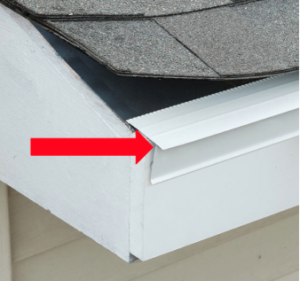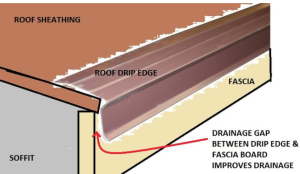Drip edge might not be the most glamorous part of your roofing system, but it’s a vital component that protects your home from potentially expensive water damage. This thin strip of metal flashing installed at the edges of your roof serves as a critical defense mechanism against moisture intrusion. With most building codes now requiring drip edge installation, homeowners are recognizing its importance as a necessary element rather than an optional add-on. Understanding what drip edge is and why it matters can help you make informed decisions about protecting one of your home’s most valuable assets.

This L-shaped or T-shaped metal flashing extends slightly beyond your roof’s edge, creating a pathway for water to flow directly into your gutters instead of seeping behind your fascia boards. By redirecting water away from vulnerable roof components, drip edge prevents moisture from working its way under shingles and into your home. Not only does this addition help prevent rot and water damage, but it also creates a clean, finished look along your roofline. As weather patterns become increasingly unpredictable, having proper drip edge protection has never been more important for maintaining your home’s structural integrity.
The benefits of installing drip edge on your roof extend far beyond basic water management. First and foremost, drip edge provides crucial protection for your fascia and soffit areas by directing rainwater away from these vulnerable wooden components and into your gutters. Without this protection, water can cling to these surfaces, causing premature deterioration, wood rot, and unsightly water stains. Additionally, drip edge creates a barrier that seals the gap between your roof deck and fascia board, preventing pests like insects, mice, and even bats from gaining access to your attic space through this common entry point.

Beyond protecting your home’s structural elements, drip edge plays a significant role in preventing more serious water-related issues. During winter months, it helps prevent destructive ice dams from forming by allowing melting snow to drain properly off your roof. In severe weather conditions, properly installed drip edge also helps stabilize your roof’s edge against strong winds, preventing shingles from lifting and potentially tearing away. The relatively small investment in drip edge installation can prevent much costlier repairs down the road, including damage to your basement, foundation, and interior spaces caused by improperly directed water runoff.
Professional roofers like Daniel Griffin, at Yellowhammer Roofing and Yellowhammer Home Inspection Services, understand the correct installation sequence: drip edge should be installed under the underlayment at the eaves (where your gutters are located) but over the underlayment along the rakes (the sloped edges of your roof). This specific arrangement ensures water flows properly off your roof without becoming trapped beneath roofing materials. Additionally, professionals know to overlap sections properly, create watertight corners, and use the correct fastening techniques to prevent future issues.
The consequences of missing or improperly installed drip edge can be severe and costly. Without proper drip edge, water can wick underneath shingles and seep into the roof deck, causing wood rot and deterioration over time. This moisture intrusion can also damage interior ceilings and walls, leading to mold growth and compromised indoor air quality. In winter climates, the absence of drip edge increases the likelihood of ice dam formation, which can force water under shingles and into your home. Similarly, incorrectly installed drip edge that directs water behind fascia boards rather than into gutters defeats its purpose entirely, potentially accelerating damage to these vulnerable wooden components.

